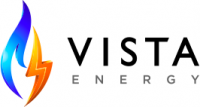How Does Electricity Get to My House?
Understand the process of electricity generation, transmission, distribution, and more
You live in a world wherein power is literally available at the flip of a switch or push of a button. Whether it’s your lights, appliances, consumer electronics, or any other modern convenience, electricity seems to appear magically – but that’s not what really happens.
The process by which electricity appears in your home when you flip that light switch consists of six specific steps. While the high-level progression is best described as “Generation, Transmission, and Distribution,” electricity must be carefully prepared for residential usage.
1) Generation
Probably the most straight-forward part of this process, power generation is also the most misunderstood, so head on over to our “How is Electricity Made?” post to learn more. As you’ll see, there are several fuel sources employed during the generation of electricity, including coal, natural gas, solar, and nuclear. Still, there’s only one core method, and we’ve been using it for almost 200 years – spinning turbines around a large magnet.
Once the power has been generated, this is where things get interesting.
2) Step-Up Transformer
Long before you can use it in your home, electricity has to travel hundreds and thousands of miles from its power plant of origin to your home to be used. But first, it must be converted into a form that will sustain transmission with as little loss as possible, and this occurs at a step-up transformer.
Transformers are the unsung heroes of this entire process, because without them, you couldn’t receive electricity at your home. They help the electricity leap up from 25 kilovolts to well over 100 kilovolts (sometimes in excess of 700 kV), while keeping the current low for long-range transmission. Only then is it ready for the power lines.
3) Transmission
Most people recognize transmission, even if they don’t realize it. Crisscrossing the country and often covered in perched birds, millions of miles of power lines and towers extend hundreds of feet into the air. Electricity has to travel long distances across such high-voltage transmission lines, as power plants rarely sit close to residential areas for safety reasons. In short, the electricity has to travel, and these wires and poles do the yeoman’s work.
4) Step-Down Transformer
When it arrives at the step-down transformer, electricity now begins preparing itself for use in your home. It decreases its high travel voltage to levels around 10 kV (though this can be higher or lower, depending upon the community). It’s only at this voltage that electricity can be distributed properly at in your area.
5) Distribution
The smaller, local equivalent to those skyscraping cross-country power lines of Step 3, these are the power lines you see lining the streets of your city, typically on wooden poles. Their job is to send electricity across area so homes and businesses can have power. The voltage remains high so it can travel around town, so you should still be careful around them.
6) Into Your Home
Though local distribution voltages are far lower than those for transmission, they’re still far too high for the average home or business. So, before electricity enters your neighborhood (or often street!), it passes through a final step-down transformer that brings it down to 240 volts so you can use appliances and flip light switches. Anything higher would overload the entire electrical system of your home, because even the largest appliances in your home (i.e., an emergency generator) cannot take more than that without burning up.
And that’s the simple six-step magic behind electricity and its journey to power lights, appliances, consumer electronics, and any other modern convenience in your home.
Have Questions? Call Us!
Our representatives are waiting to help you Mon - Fri 7:00 am to 6:00 pm CST
Sat 10:00 am to 3:00 pm CST
